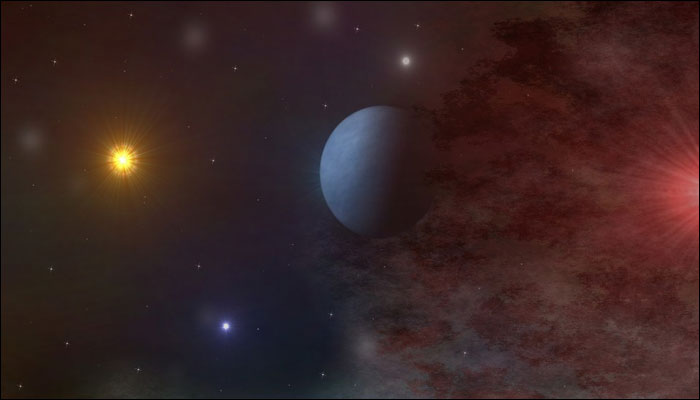New Delhi: Can a small star give birth to a giant planet? According to previous studies, no. However, a new discovery may just change that perception.
Challenging numerous theories of planet formation, a gas giant the size of Jupiter has been found orbiting a star that is half the size of the Sun.
NGTS-1b is the largest planet ever discovered in the universe in comparison to the size of its companion star, according to the study to be published in an upcoming issue of the journal Monthly Notices of the Royal Astronomical Society.
“The discovery of NGTS-1b was a complete surprise to us – such massive planets were not thought to exist around such small stars,” said lead author of the research Daniel Bayliss from the University of Warwick in England.
As per existing theories of planet formation, while small stars can readily form rocky planets, they do not gather enough material together to form Jupiter-sized planets.
The planet NGTS-1b which is six hundred light years away from Earth is a hot Jupiter, at least as large as the Jupiter in our solar system, but with around 20 percent less mass.
Located extremely close to its host star – just three percent of the distance between Earth and the Sun – the planet orbits it every 2.6 days. This means that a year on NGTS-1b lasts two and a half days.
The temperature on the gassy planet is approximately 530 degrees Celsius, or 800 kelvin.
Researchers spotted the planet using the Next-Generation Transit Survey (NGTS) – a wide-field observing facility made of a compact ensemble of telescopes, designed to search for transiting planets on bright stars – run by the Universities of Warwick, Leicester, Cambridge, Queen’s University Belfast, Observatoire de Genève, DLR Berlin and Universidad de Chile.
The planet orbits a red M-dwarf – the most common type of star in the universe, leading to the possibility that there could be more of these planets waiting to be found by the NGTS survey.
IANS

